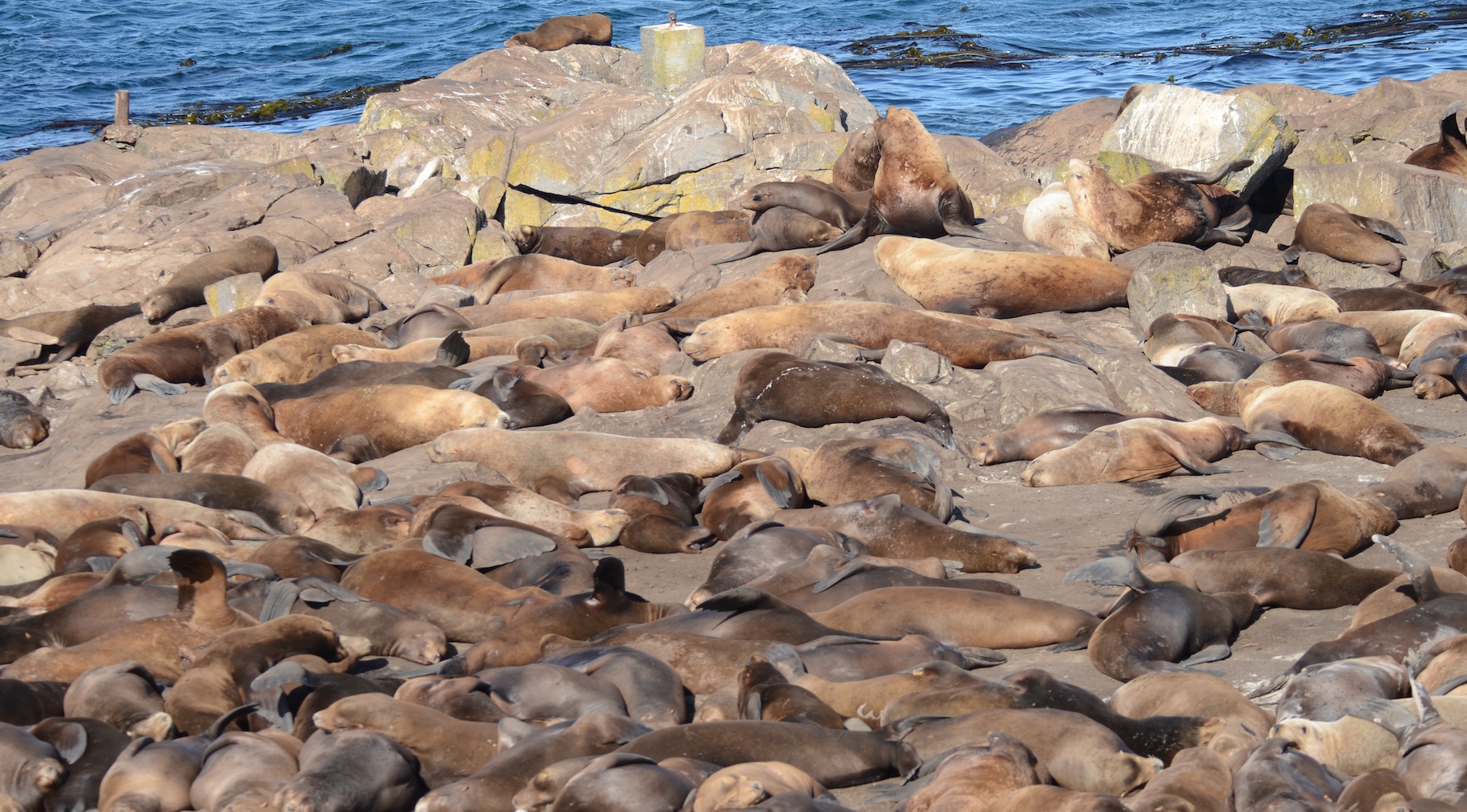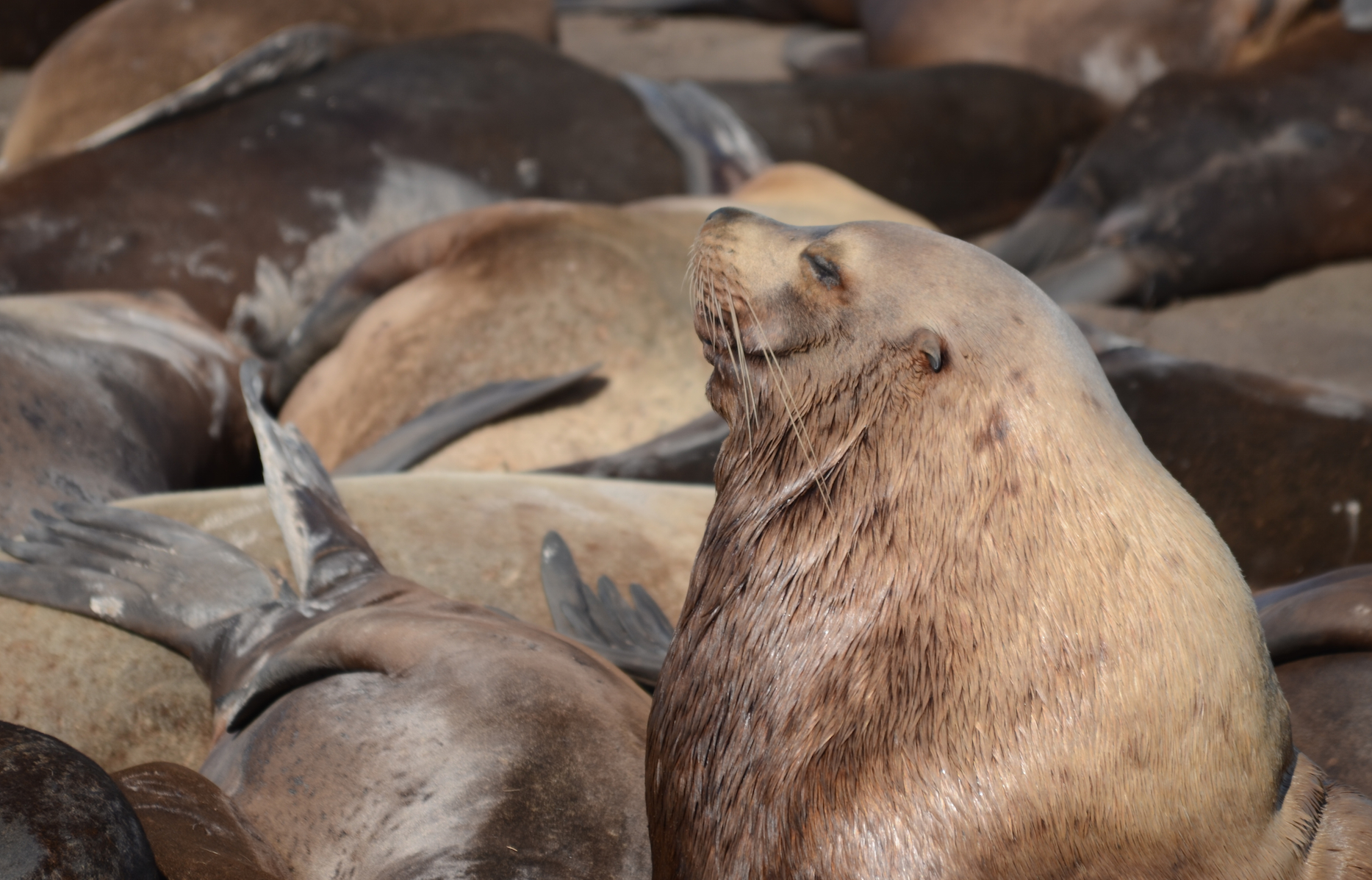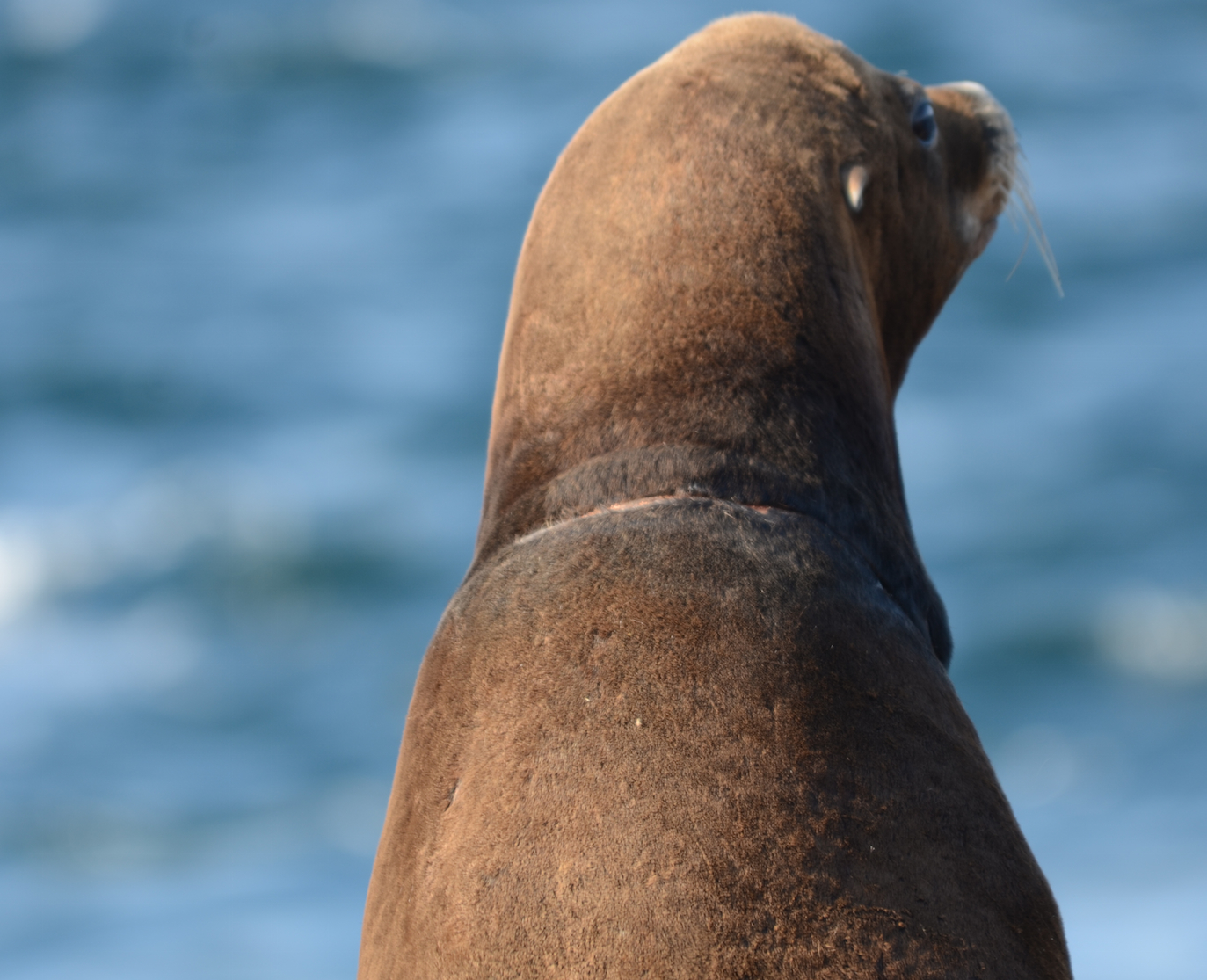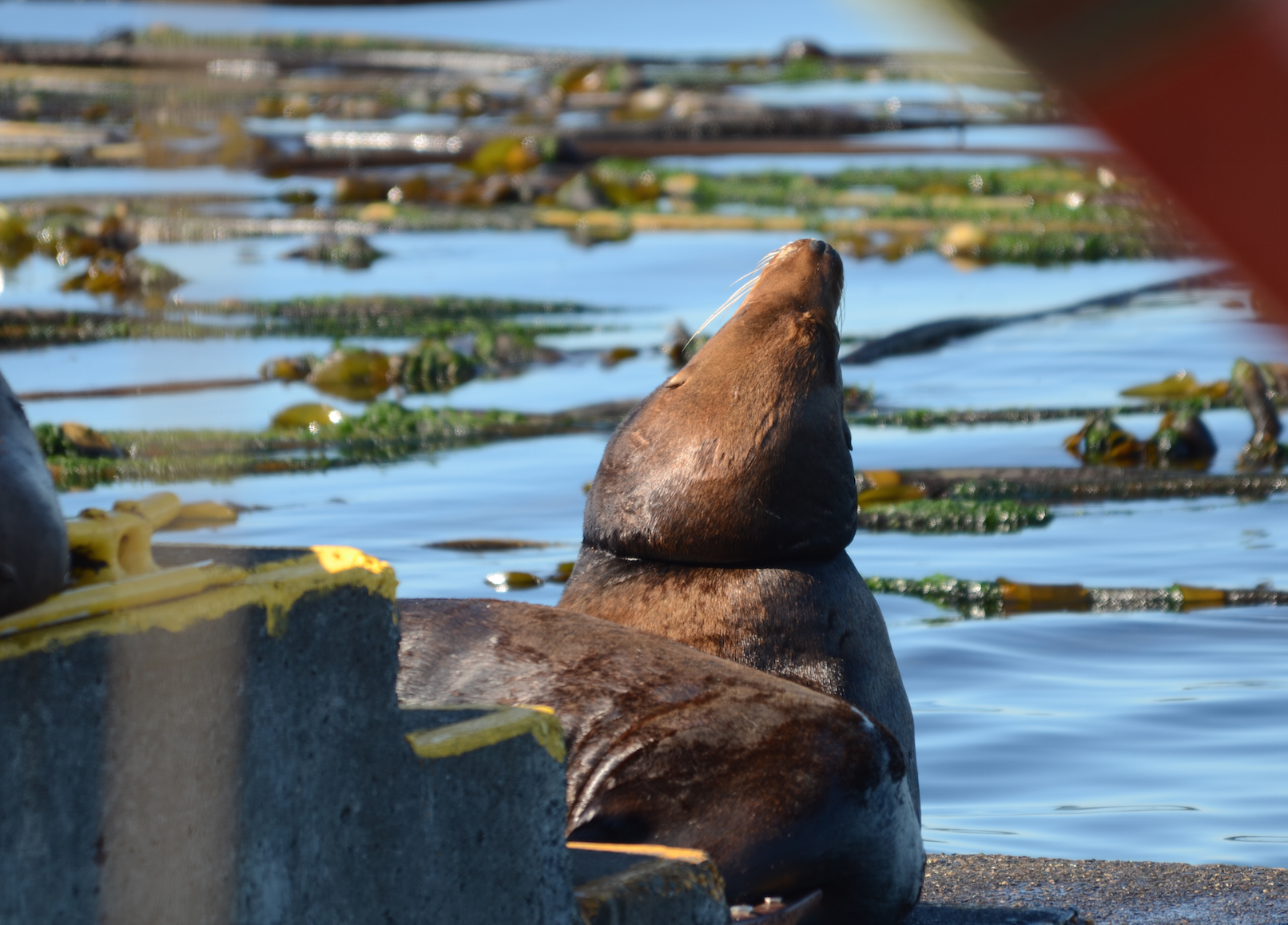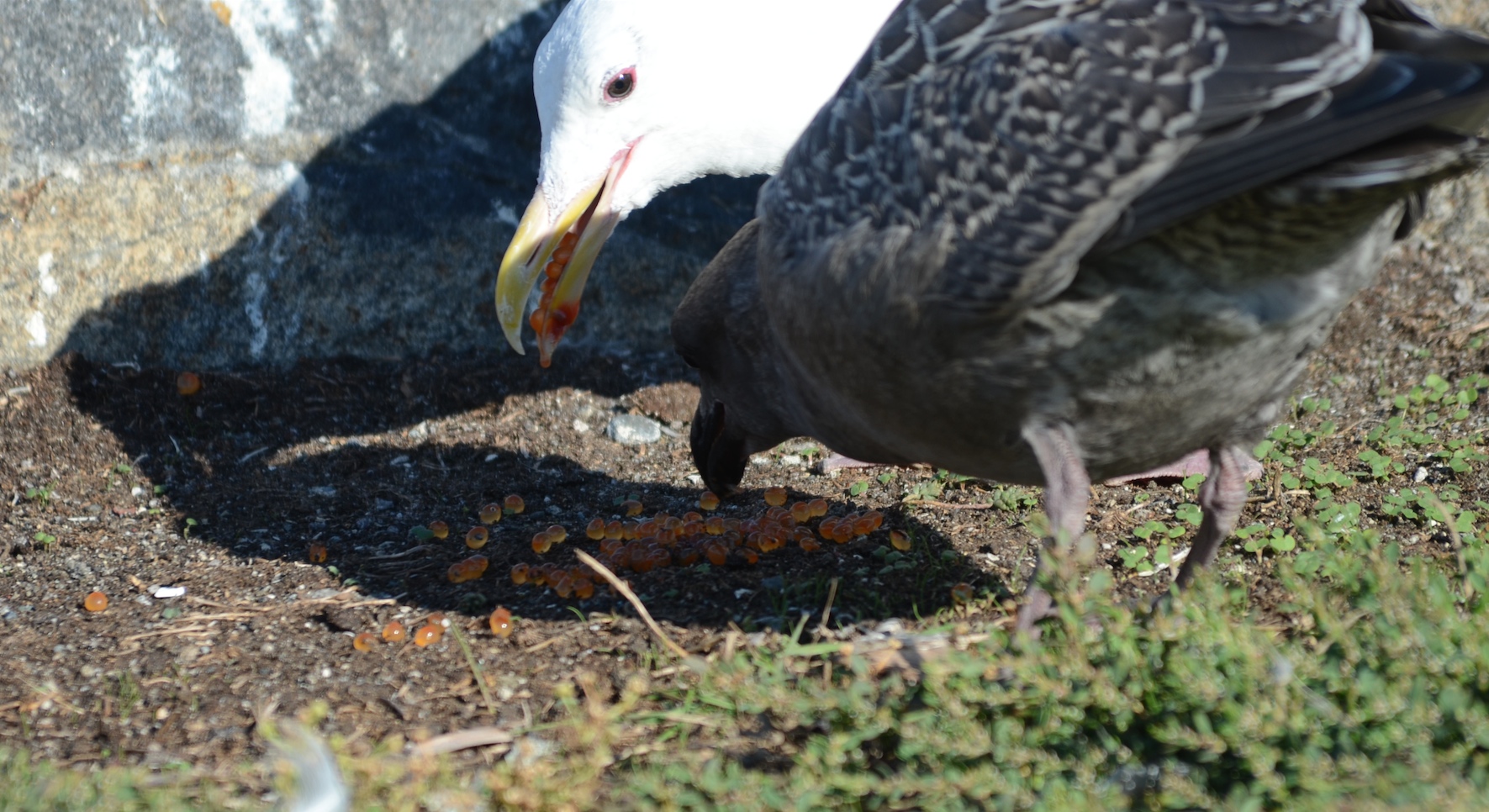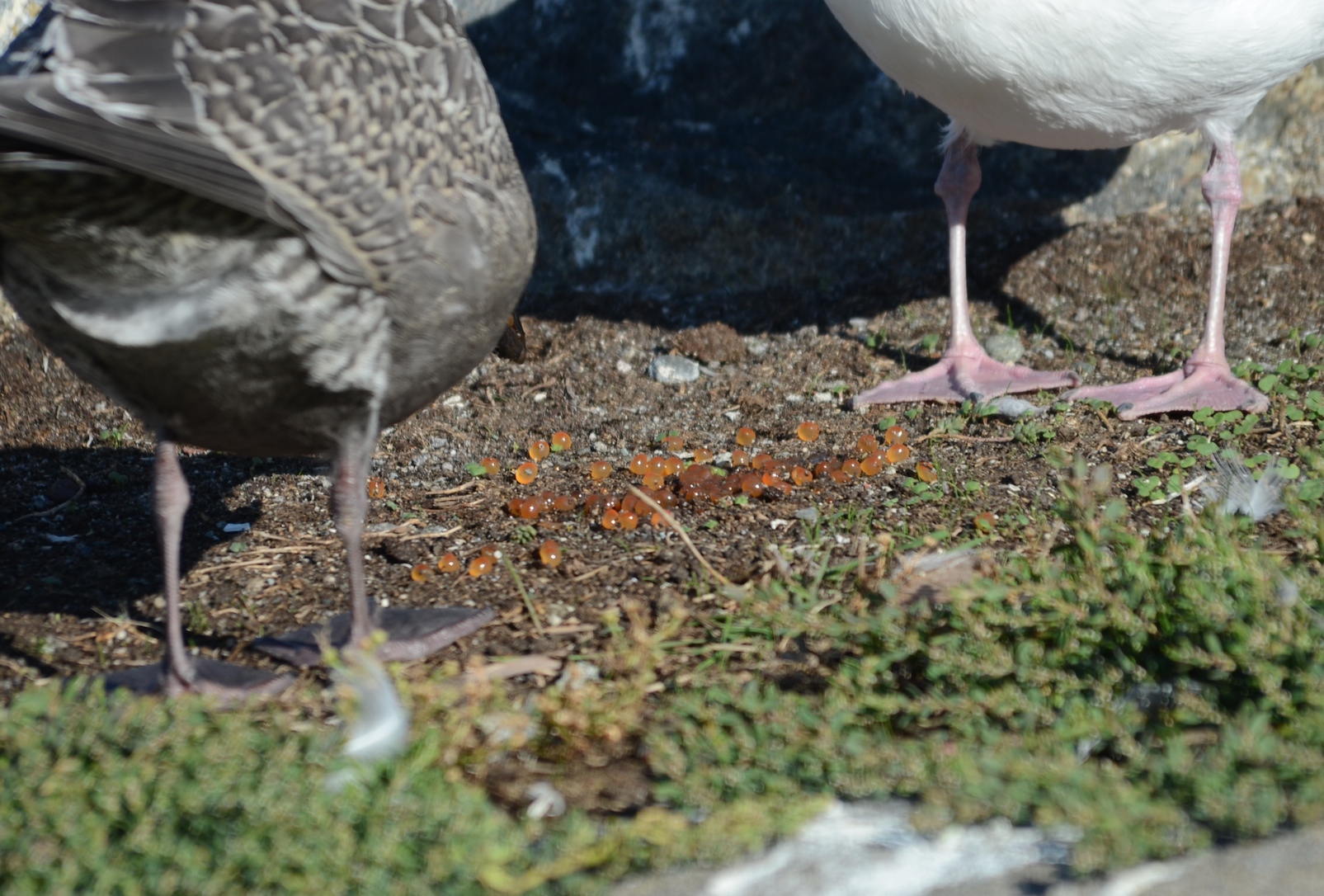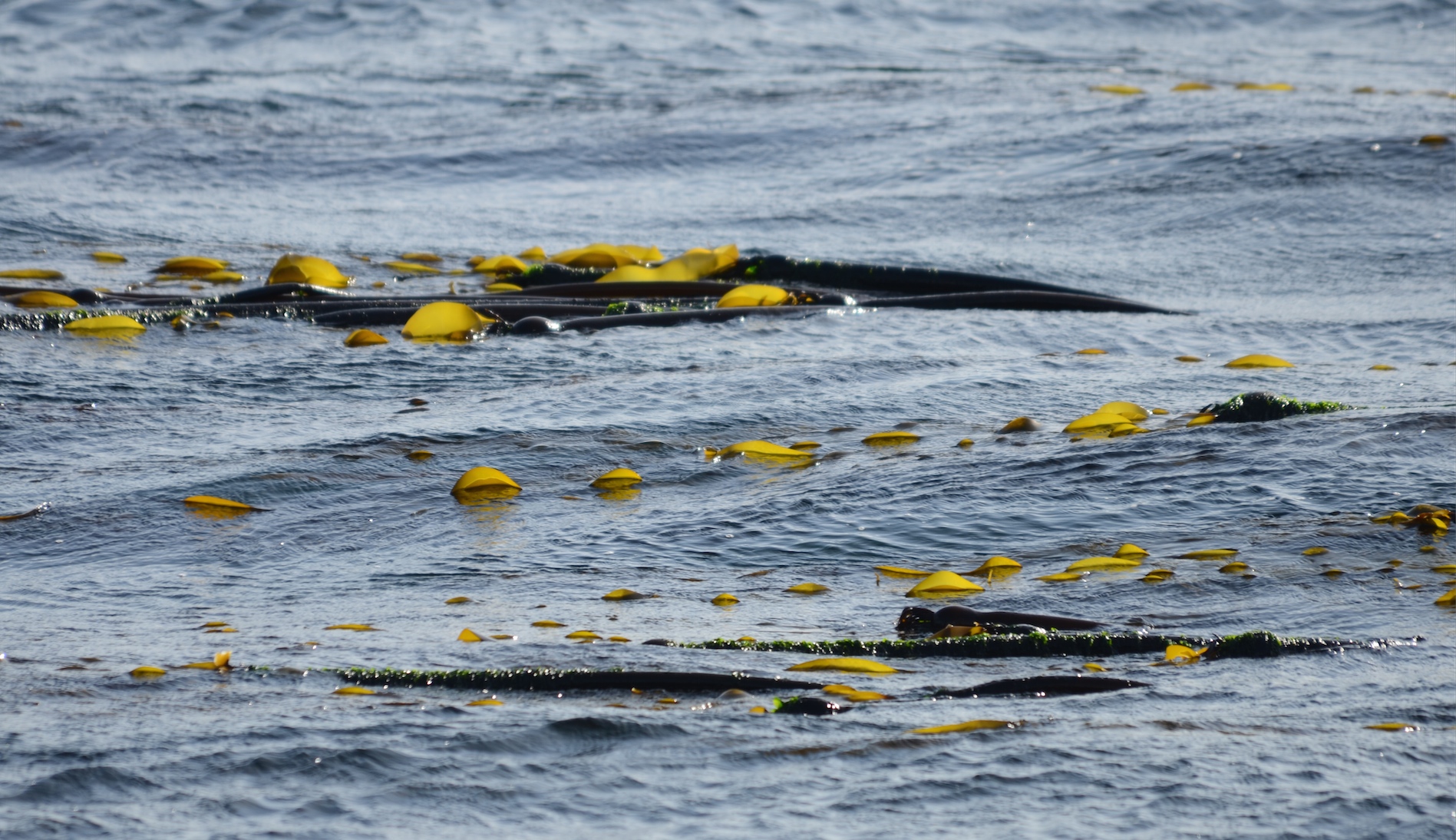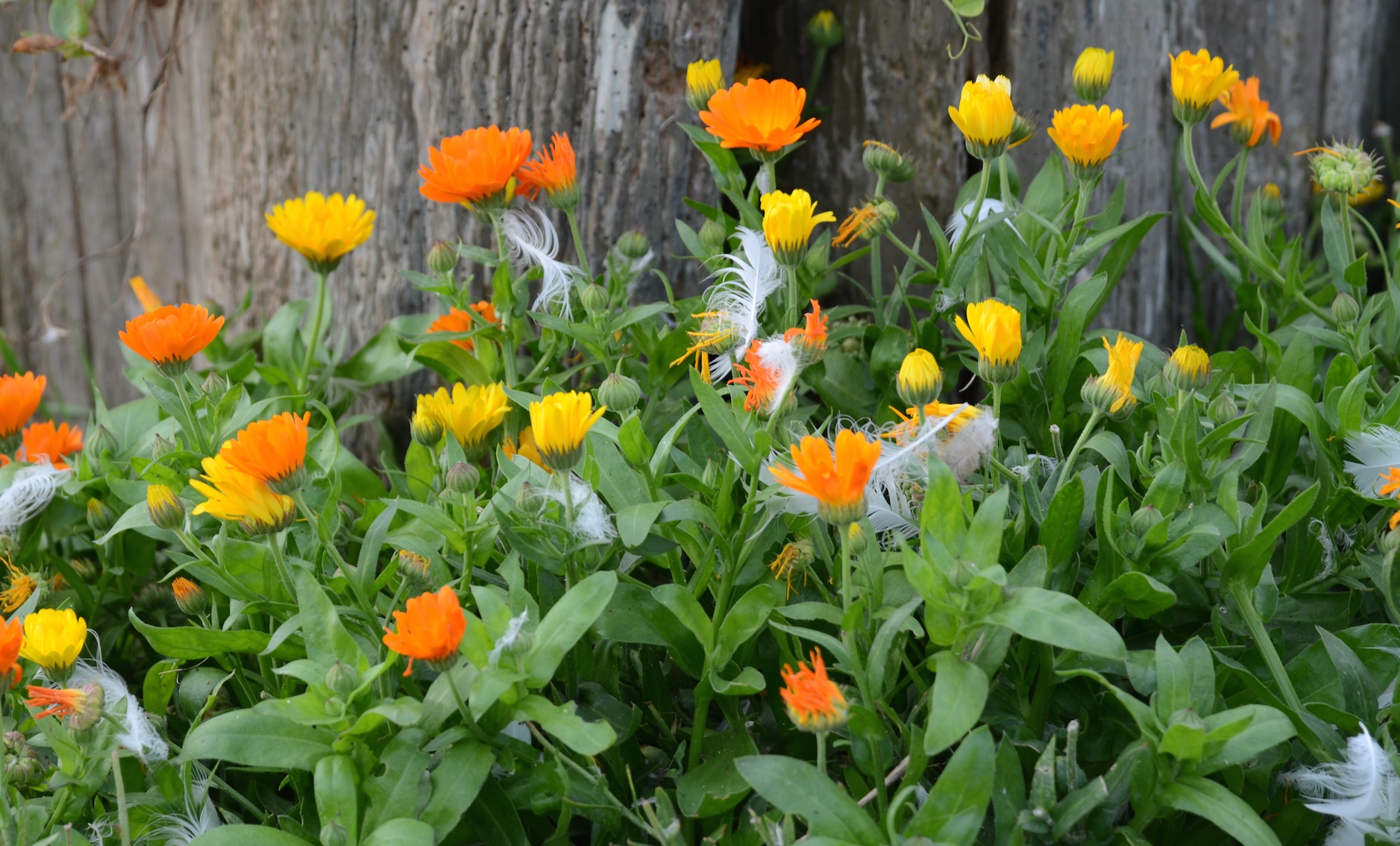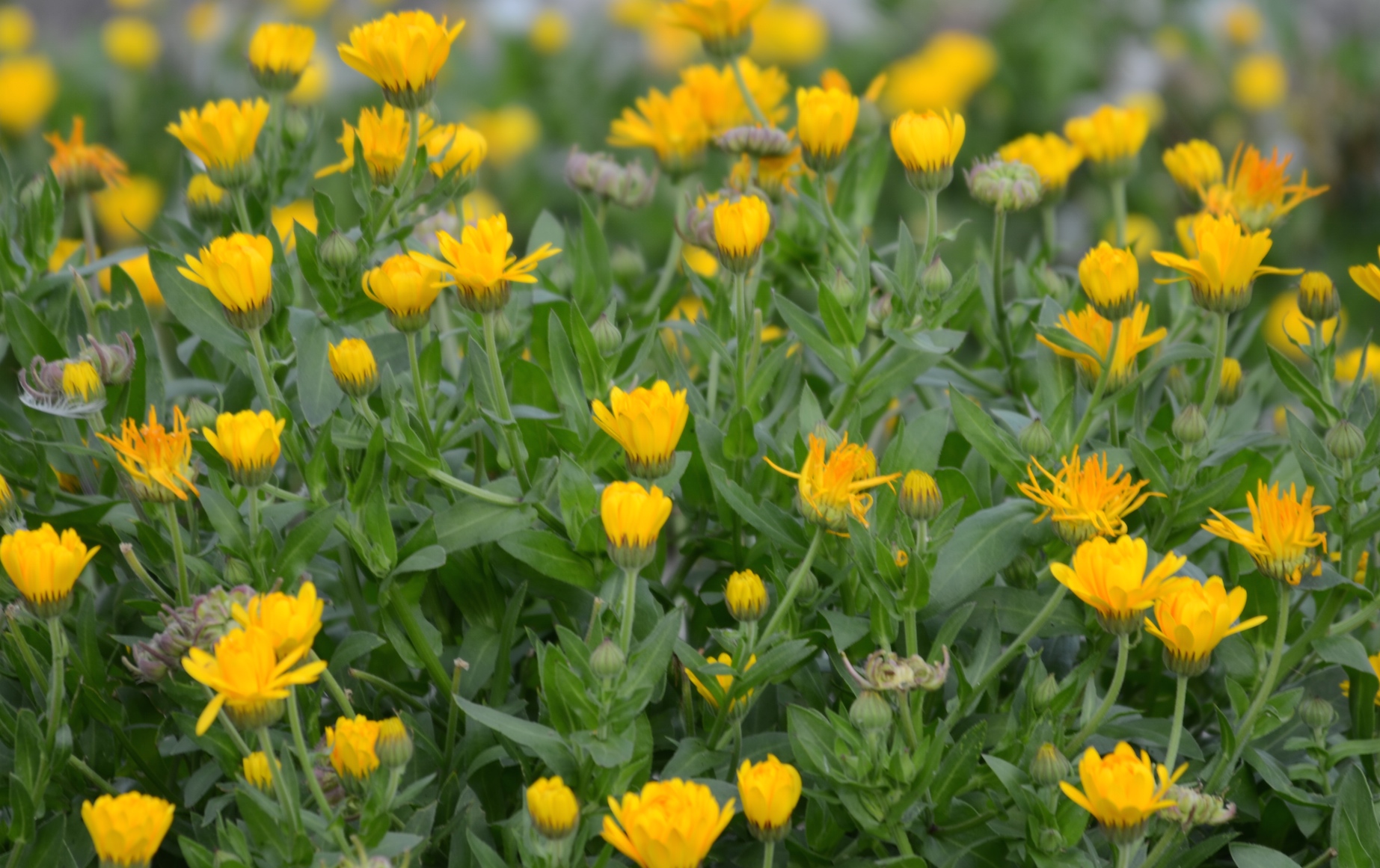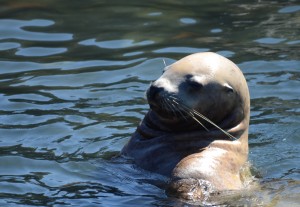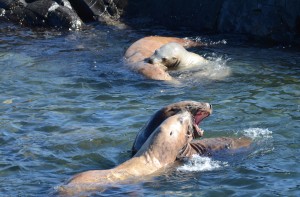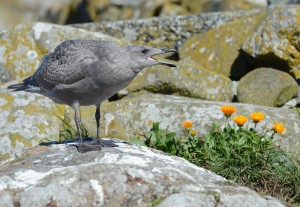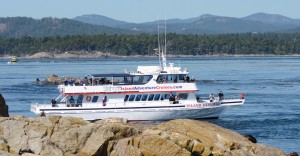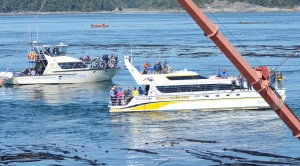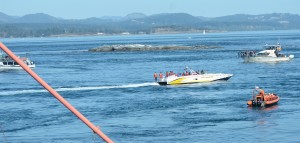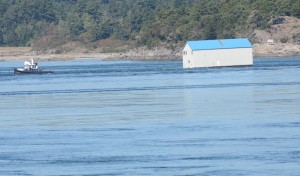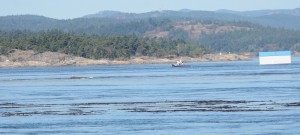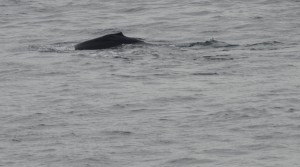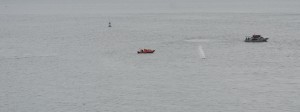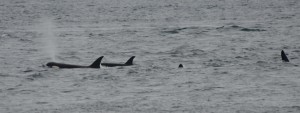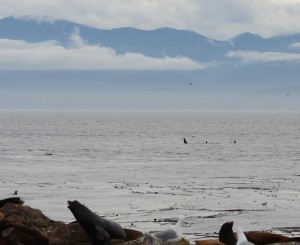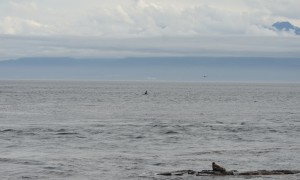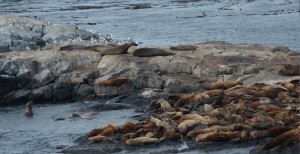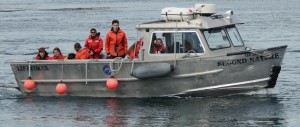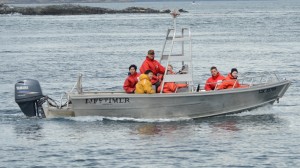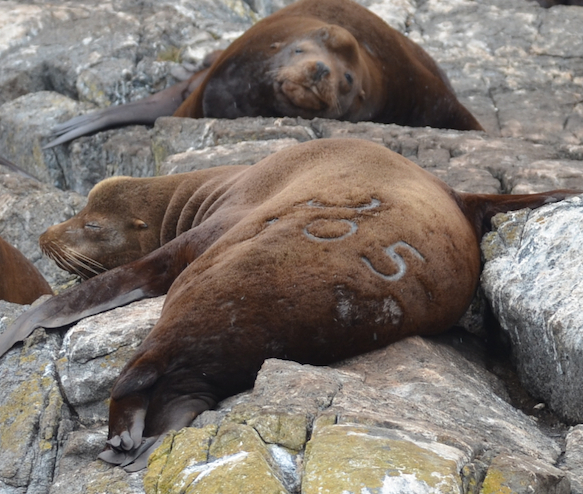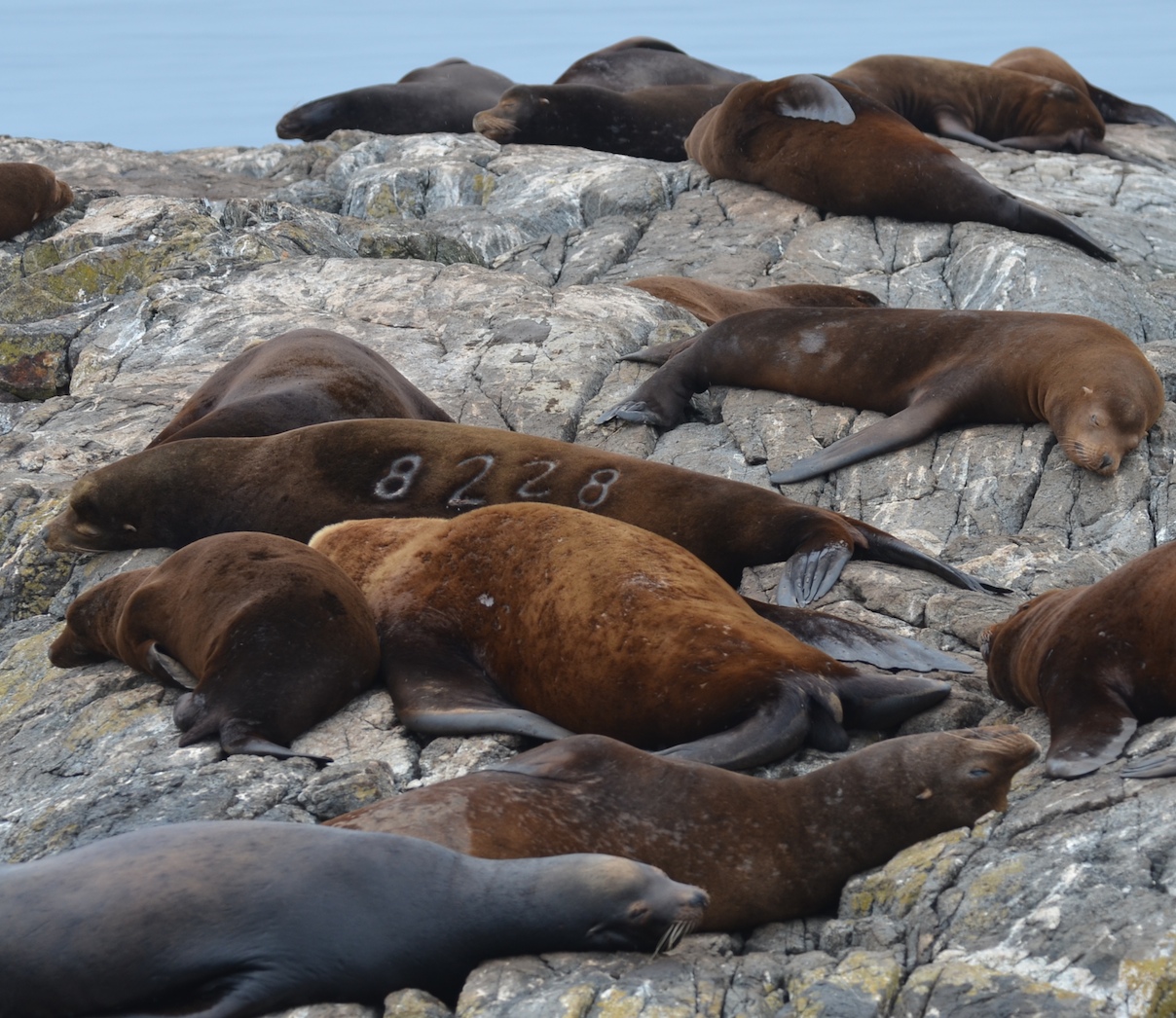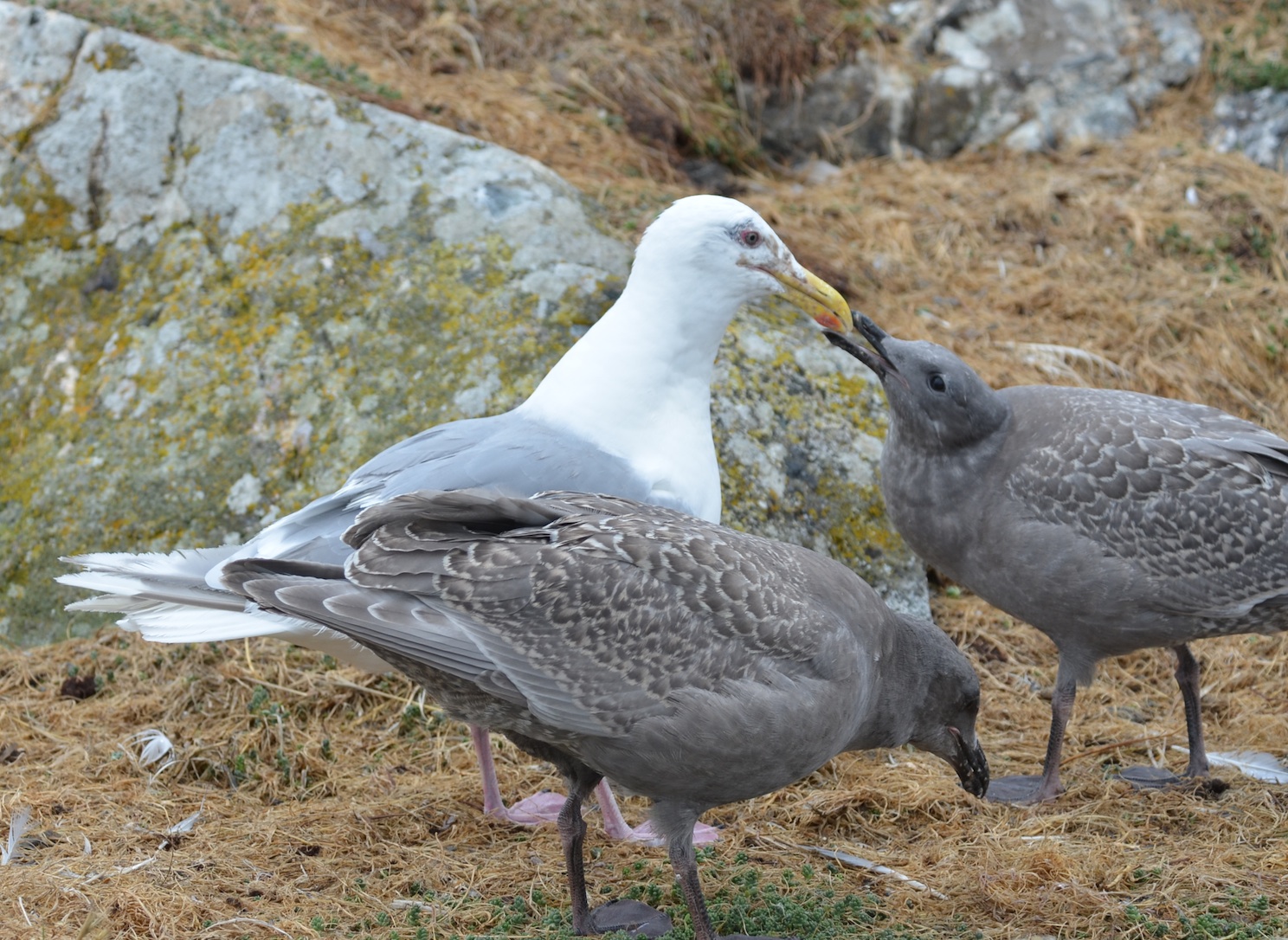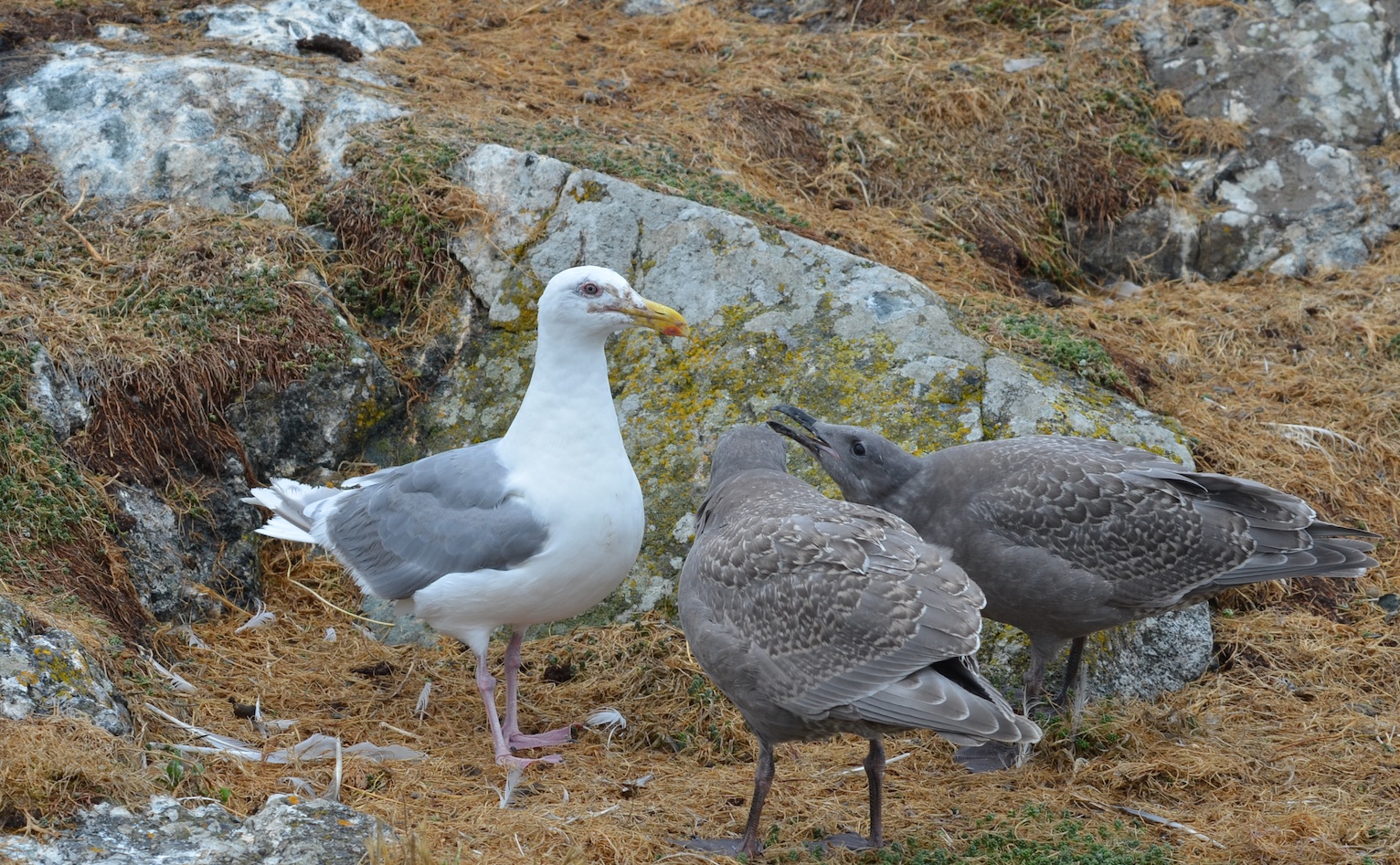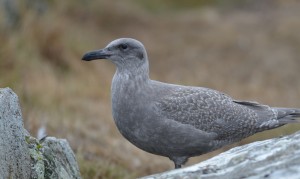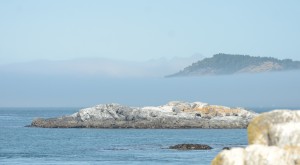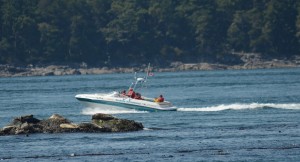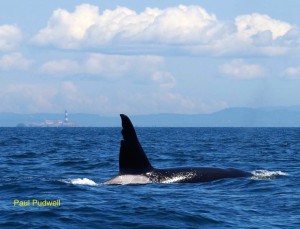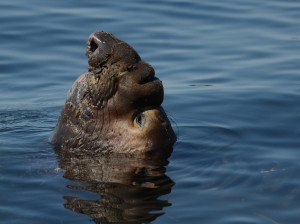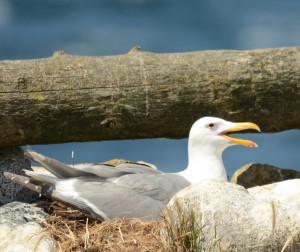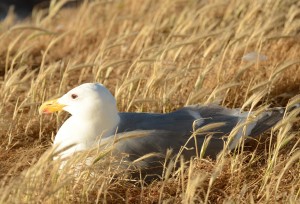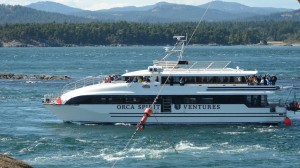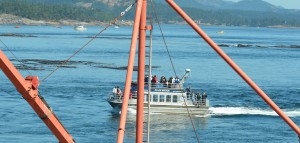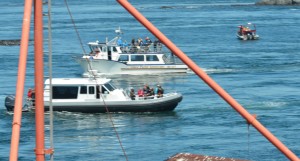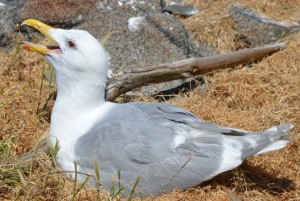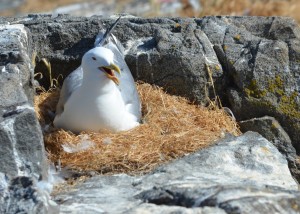It was a westerly kind of a day, gusting 25 – 30 knots all morning under partially clear skies. In the afternoon gusts were stronger, churning the sea into a white froth. The wind speed dropped to 20 knots in the evening and was closer to 15 by the time the sun went down. Although the fog was threatening early, it stayed off to the west and the haze that has hanging around was cleared by the wind and replaced with building clouds. The strong wind warning continues and the forecast for Monday is mainly cloudy. The barometer continues its step-wise descent.
In spite of blustery conditions and because of all the marine mammal action there were 18 visits observed by commercial tour operators today. Whale watching was good in the area today and the sea lost some salt to exhilarated looking tourists who had their hoods on and exposure suits battened down in the smaller open boats. No other vessels were observed in reserve.
It was another exciting day on the mammal front with Humpbacks all around, Killer Whales in Race Passage, an increased number of sea lions and return of at least one elephant seal to Great Race Island. Salmon continue to be an important part of gull diet in the area and that is mostly due to scavenging off kills by sea lions.
One of the California sea lions that hauled out with a big new flasher last week, has managed to get rid of it. I am not sure if the hook is inside but today he just had a little broken piece of the flasher hanging out of his mouth when I went to do the seawater sampling and when I came back it was lying on the walkway with its bead chain still looking shiny. There are several ‘necklaced’ sea lions here right now. They all seem to have white plastic strapping around their necks and it looks deadly.
There are only a few Glaucous-winged Gulls left on Great Race and not many more that are still being fed by parents. I photographed one juvenile eat salmon caviar brought back and deposited with special serving and plating effects by its parent. Lots of people think that gull is just a four- letter word associated with human garbage and super abundant. Glaucous-winged Gulls are the only species (of ten species seen here) that actually nest in the Salish Sea and their numbers have been declining for a few years now. Known in birder code as GwGu this four letter word represents an important species in the local ecosystem that is a risk due to human activity. In many areas plastic pollution poses a serious threat to young gulls that do not know better than to eat it. From the evidence so far far at Race Rocks, GwGu have been fairly plastics-free. Lets keep it that way.
Although most of the bull kelp is still very strong and beautiful, many of the stipes have epiphytic green or red algae growing on them now as they start to senesce. Bull kelp is an annual species and it grows very fast during the spring and summer. Soon the storms will be dispersing these incredible carbon sinks and some will end up on the bottom entombed in mud. Sinking plankton takes the most carbon to the bottom, helping make the ocean the world’s biggest carbon sink for atmospheric carbon dioxide. Thank you ocean, for being such a complex regulator of climate.
Ashore, the Calendula is still blooming giving new meaning to the term perennial. This plant flowers all year round here, looking as fresh in September as it does in March. It closes up when it is cold and wilts in frost but survives as a remnant of a long-gone lighthouse keeper’s garden. Native to the Mediterranean, Calendula’s bright, cheery blooms are incredibly resilient and it is one of the few plants the Canada Geese don’t eat. Although it probably shouldn’t be flourishing in an Ecological Reserve here, I am glad it is here and it reminds me that people are part of the ecosystem.
Again chores were routine and there were no visitors.
- Gulls feeding salmon eggs to their young.
- Gulls feeding salmon eggs
- Calendula officinalis

